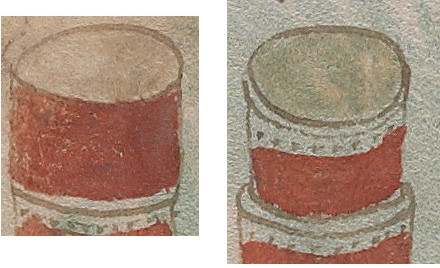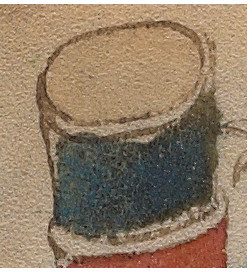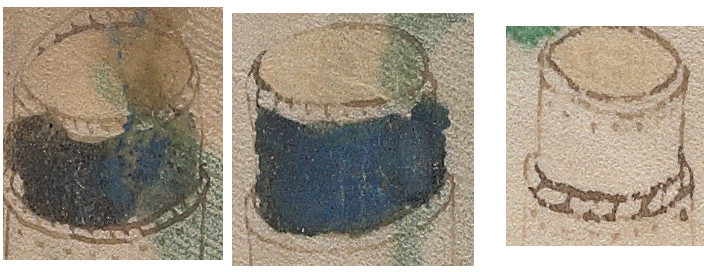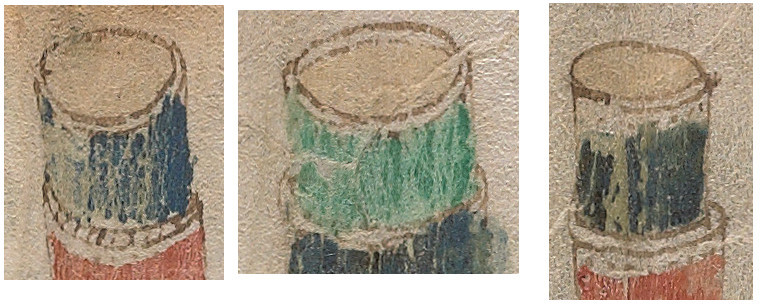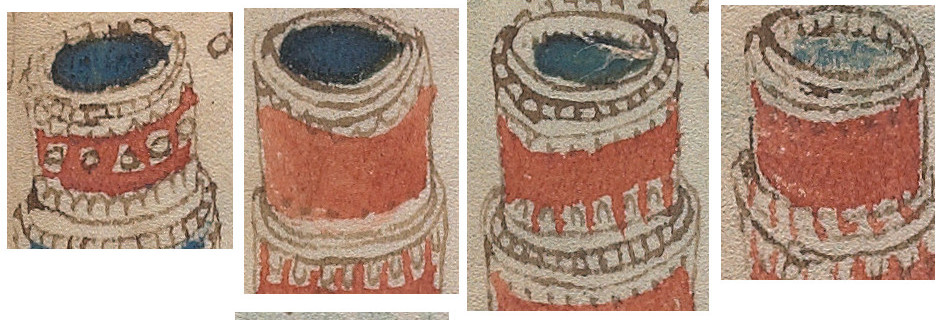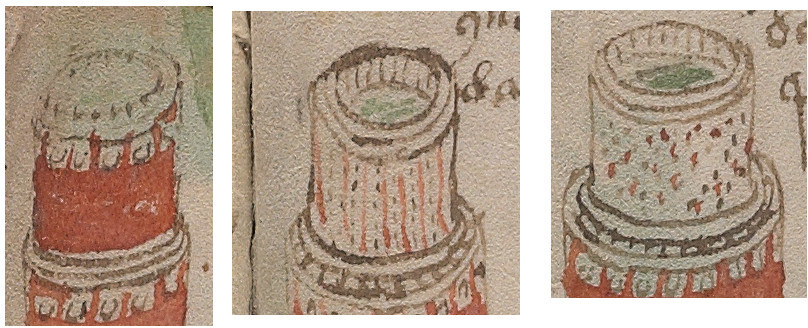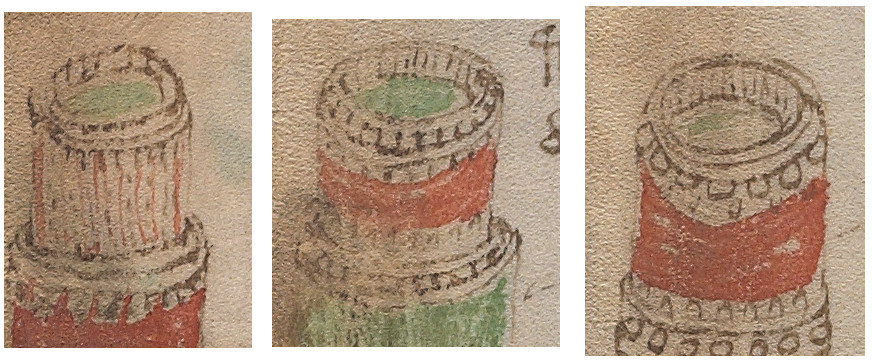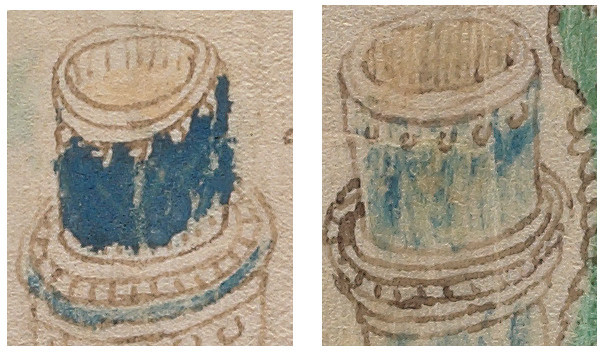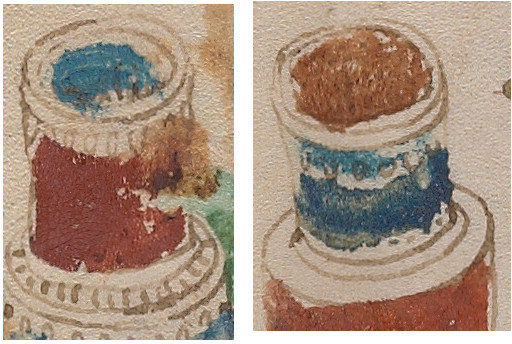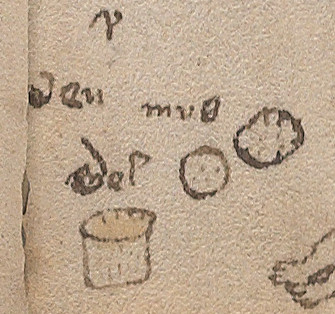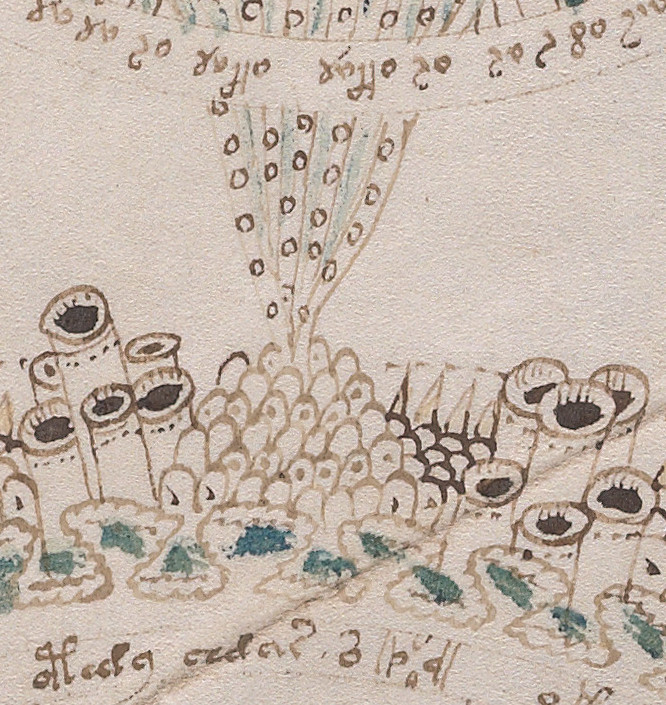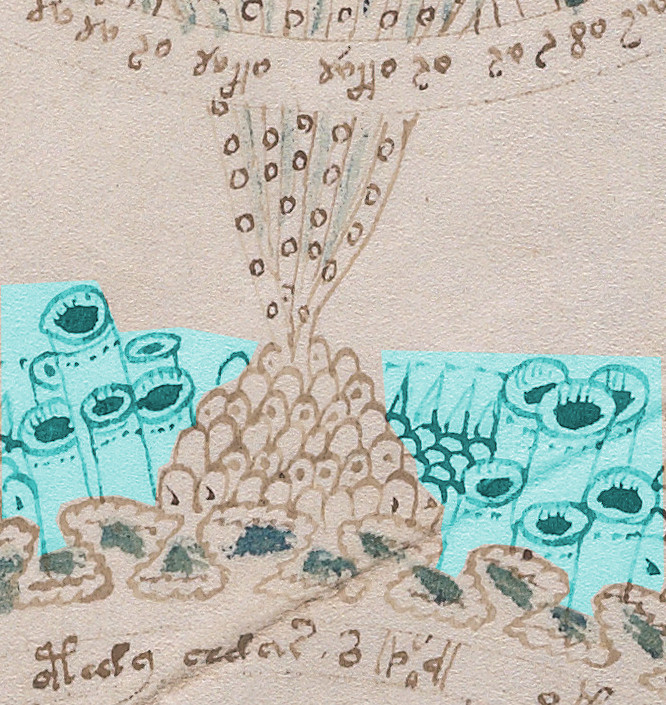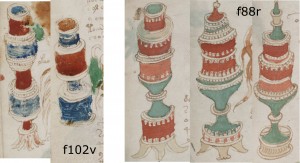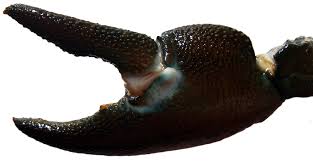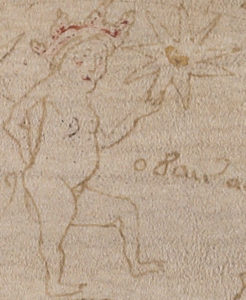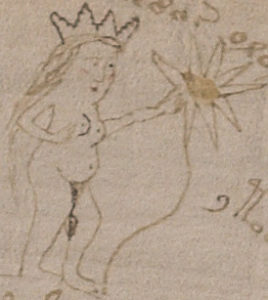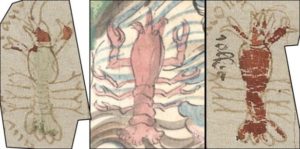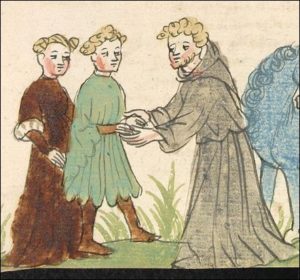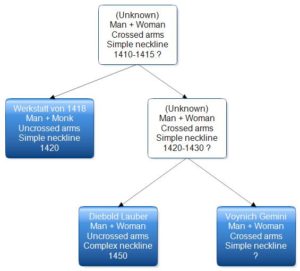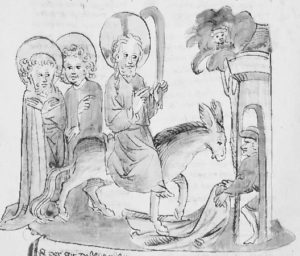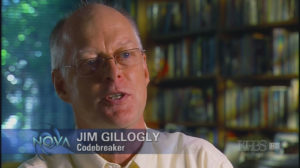Seventy years ago this weekend, a man’s body was found on Somerton Beach just south-west of Adelaide: our inability to identify this “Somerton Man” or even to reconstruct any significant part of his life has turned him into one of South Australia’s favourite cold cases. His unexplained death has inspired books, novels, TV documentaries and countless web pages and blog posts: behind this mini-industry is a panoply of breathless conspiracy theories, ranging from spurned suicidal lover to Russian rocket spy to inter-state car criminal (as if anyone would even consider such a thing, hrrmmmh).
On this day, though, I think it’s time to take a rest from that whole treadmill, and to look at the Somerton Man from a quite different angle.
History, Evidence, Disappointment
Cold cases are, almost definition, historical: so to “do history” on them, we need to select both historical evidence and a historical methodology / mindset.
But even though social historians love nothing more than diaries, journals, or even tax records of ordinary people, for the Somerton Man we only have what one might call tertiary social history evidence – incidental objects of low social signification such as cigarettes, laundry tags, chewing gum, combs, and (what I would categorise as) a fairly random assortment of men’s clothes. Can we read social history clues and cues to locate the Somerton Man in a social milieu? People have tried this trick, for sure: but I think it is fair to say that this has yielded very little of use.
Similarly, even though political historians tend to work from a more high-end (yet slim) frame of reference (from Chifley to Churchill), it hasn’t stopped researchers from trying to read the mysterious unreadable note attributed to the Somerton Man as implying some kind of espionage-centric back-story for him: a Russian spy scouting out South Australia’s uranium secrets, or defecting from some international conference. Yet the supposed ‘tradecraft’ evidence holding this aloft is something that I’ve never found any genuine substance to.
Finally, despite the South Australian police’s loss of almost all its evidence (Gerry Feltus had only a small folder of fragments to work with), hundreds of newspaper articles on Trove plus the detailed text of inquest reports have yielded a fine factual slurry for researchers to sieve and then rake over in search of That Single Golden Nugget Of Information That Turns Everything Upside Down. Yet even the massed eyeballs of the Internet’s army of DIY forensic historians – sometimes derided as armchair detectives, but who have actually managed to uncover all manner of interesting evidence – have struggled to gain any significant kind of purchase on the Somerton Man’s slippy upwards slopes. What was his profession? What was his nationality? Satisfactory answers remain out of reach for even such (apparently basic) questions as “if the Somerton Man wasn’t “T. Keane”, why did his suitcase have T. Keane’s tie and underwear?”
In short, none of the historical hats we have worn when we try to understand the Somerton Man seems to have had the (mythical) power of a Holmesian deerstalker: and is the game even afoot in the way many (most?) people think it really ought to be? The answer would seem to be that it is not.
As of December 2018, I don’t believe that we have any genuine idea who the Somerton Man was, or precisely why he died (i.e. mishap, murder, or suicide), or where he had come from, or even what he was doing in Adelaide at all. For all of these, we have well-stocked warehouses of might-possibly-have-beens, for sure: but this is a situation only someone wanting to weave and embellish a story around the scanty facts could be truly satisfied with. Anyone who wants to know what happened to lead up to the Somerton Man’s death is, for now, likely to be in a state of disappointment.
Random Clothes
Putting all that accumulated historical disappointment to one side, I actually think we are very close to being able to reconstruct a little about the Somerton Man’s life and times in a useful way: and even if the precise details remain murky (and may remain so for some time), I suspect that there’s still a lot we can now say.
For a start, his clothes were not from a single shop or town or even country (some were American, some were Australian): even his shoes and slippers were different sizes. Others may disagree, but I don’t think this sartorial randomness can be read as a sign of affluence or of taste, or even of implying he was on some kind of undercover operation. Rather, to my eyes it strongly indicates that he was just plain poor – his clothing has all the hallmarks of charity donations, of Seaman’s Missions, of gifts by charity’s hospital visitors.
From all this, I strongly suspect that he, like so many others in the years immediately following WW2, was a recent immigrant to the country (he had air mail stickers in his suitcase), and quite probably not a legal one (no official record of him could be found). Exactly where he originally came from I can’t say: I suspect that the faded tan on his legs may imply that he had earlier that year been working outdoors, perhaps riding horses on a farm. Remember that Paul Lawson stated:
On looking at the deceased legs I am of the opinion that he was used to wearing high heel riding boots. I form that opinion because the muscles of his legs were formed high up behind the knees, similar to the muscles of a woman who wears high heeled shoes. [Gerry Feltus, “The Unknown Man”, p.85.]
I should also note what John Burton Cleland wrote about the air mail stickers:
Air-mail stickers in suitcase – corresponded with some one at a distance – other State more likely than Britain (special air-mail letter forms usually used for latter).
All the same, my current suspicion is that he arrived by surreptitious means (e.g. using fake papers) in Australia around October 1948, perhaps from the United States, perhaps staying in New Zealand for a period of time (where the Rubaiyat seems to have come from) en route, and – like Charles Mikkelsen – was corresponding with one or more people there. But all of that remains just a guess.
The Known Man
Who was the Somerton Man? Apart from the nurse Jessica Harkness / Jo Thomson (who told her daughter that she knew who the Somerton Man was, but wouldn’t tell the police at the time or even Gerry Feltus decades after the event), not a single person has admitted to knowing who he was. Nobody at all! As for me, I don’t believe for a New York second that the Somerton Man somehow entered Australia and made his way to Somerton Beach to die without encountering en route a whole load of people – fifty to a hundred at a minimum – who would subsequently recognize him if they wanted to. And so I think that the title of Gerry Feltus’s book – “The Unknown Man” – belies what I think will prove to be a difficult truth to swallow about the Somerton Man: that a whole set of people knew who he was, but for broadly the same reason chose to say nothing.
The Italian word for this is omertà – a code of silence surrounding Mafia criminal activities, along with a shared, mutual refusal to give any evidence to the police. (Even former police.) Everyone knows what happens to squealers, even the KGB: even though the CIA says the story about captured double agent Pyotr Popov being thrown alive into a furnace isn’t actually true, it is very likely still presented as if it were true to GRU new recruits, to persuade them of the value of “omertà-ski”. And let’s not pretend that the Novichok attack never happened, right?
Anyway, when Gerry Feltus had worked out the name of the (unnamed) nurse whose phone number was written on the specific Rubaiyat connected to the slip of paper in the dead man’s pocket, he interviewed her several times. Yet even though, as a retired police officer, he knew full well that she told him nothing of the truth surrounding the dead man that she was clearly aware of, he never really twigged why that was the case. For me, though, the reason for her prolonged silence seems all too obvious: that she was aware of the omertà surrounding the dead man, and wasn’t prepared to be the first one to say That Which Must Not Be Spoken out loud.
The presence of an Italian organized crime syndicate in Melbourne is something that became all too apparent in the 1960s, with the spate of Victoria Market murders being triggered (literally) by the accession wars following the deaths (by natural causes) of crime godfather Domenico “The Pope” Italiano and his enforcer Antonio “The Toad” Barbara in 1962. This crime group was described at the time in a secret report by John T. Cusack as follows:
It is frequently referred to by its adherents as the Society. Some, particularly outsiders, call it mafia. Actually it is not mafia. The latter is exclusively Sicilian in origin and membership. Since the Society in Australia is exclusively Calabrian, it is obviously a derivation of the ancient Calabrian Secret Criminal Society known as the L’Onorata Societa (The Honoured Society), ‘Ndrangheta (Calabrian dialect for The Honoured Society), also referred to by some as Fibia.
From my perspective, the most powerful explanation for the silence surrounding the Somerton Man would be not that nobody knew who he was, but instead that he was some kind of footsoldier in a criminal society (I would predict Melbourne, given that the Melbourne train arrived in Adelaide early). I suspect this was (in 1948) not the ‘Ndrangheta, but rather home-grown gangsters The Combine (more on that in a moment). More broadly, my inference is that lots of people knew exactly who he was, but deliberately chose to say nothing. Gerry Feltus certainly knew he was being spun a line by Jo Thomson, but perhaps he will live to be surprised by how many people knew who exactly “The (Un)known Man” was.
I hope that some day soon someone will come forward – even anonymously, seventy years on – to defy the code of silence and finally tell even a small part of the Somerton Man’s story.
Daphne Page
What was it like to deal with omertà in Australia in the late 1940s? Fortunately, we have a pretty good idea. Jo Thomson’s (soon-to-be) husband Prosper (George) Thomson got involved in a court case where he was wedged between a lady called Daphne Page and a dangerous Melbourne individual who he would not name in court. The judge seems to have taken a hearty dislike to everyone involved, somewhat reluctantly judging the case in George’s favour but ordering him to pay the costs.
From this, we know that “Early in December [1947] he [Thomson] went to Melbourne to sell a car for another man.” When a cheque from the “other man” bounced, Thomson was unable to do anything about it: and so refused to pass on the “black market balance” (that he hadn’t received) of the failed transaction to Daphne Page back in Adelaide. Page then told him she’d get her whole family to pretend that she’d instead loaned him £400 and would take him to court. In the end, the judge thought that Thomson’s (who had welched on a black market deal with Page when the Melbourne crim he’d sold to had welched on his half of a deal, and then told her to forget all about it) poor behaviour was more legally justifiable than Page’s poor behaviour: but it’s hard to feel grotesquely sympathetic towards either.
But even so, that’s what can easily happen when things as simple as buying or selling a car for its actual value are, thanks to the Price Commission, effectively pushed out onto the black market and criminalized. According to the Barrier Miner 15th June 1948, p.8:
Men in the trade said honest secondhand car dealers had almost been forced out of business during the war. Records showed that 90 per cent of all used car sales were on a friend-to-friend basis and they never passed through the trade.
So: the man the nurse Jo Thomson was living with was directly connected to dangerous Melbourne criminals who operated under a code of silence (George Thomson wouldn’t name the man in court). This is not a conjecture, this is just a consequence of being a garage proprietor and car dealer in 1948, a time when 90% of car buying and selling was done on the black market. Thomson expressed no shame or sorrow for having tried to broker a black market car deal between Daphne Page and Melbourne criminals (even if it went wrong), because that is what he had to do to stay in the car business: you might as well have asked a dog not to bark as ask him to change his ways.
Suggested Links to Melbourne
One story that appeared in the Adelaide News (26th January 1949) (and in the Sydney Daily Telegraph and Geraldton Guardian) suggested a connection between the Somerton Man and a Melbourne baccarat school:
Gamblers believe dead man was “nitkeeper”
Melbourne.- Two promininent Melbourne baccarat players who desire to remain anonymous, believe they knew the unknown man in the “Somerton beach body mystery.”
They saw the man’s picture in a Melbourne newspaper and said they thought they recognised him as a “nitkeeper” who worked at a Lonsdale street baccarat school about four years ago. They could not recall his name.
They said the man talked to few people. He was employed at the baccarat school for about 10 weeks, then left without saying why or where he was going.
Nitkeepers / cockatoos were basically lookout men, hired to stop police and undercover officers from getting inside the door: they were equally part of the street bookie’s world.
Gerry Feltus’s “The Unknown Man” (p.118) also included a cutting from the Mirror (no date given, but much later):
One Mirror “investigator” had more than just an idea to go on.
The Tamam Shud, he said, was more than just a page torn from a book.
It was the usual signature of a man who had twice stood trial for murder.
Every big baccarat player in post-war Melbourne knew who “Tamam Shud” was.
He was the enforcer!
In the hey day of a man called “Twist” he said and “Freddie The Frog” Harrison – himself executed – “Tamam Shud” was known and in [the] nether world of sly grog and illegal baccarat, feared.
Obviously the dead man had fallen afoul of the underworld and had been executed.
In fact, Melbourne detectives had investigated the same theory years before.
But this apparently promising lead had been a dead end.
Note that “Twist” (Jack Eric Twist) and Freddie “The Frog” Harrison (who was killed in 1959) were two of the five people who made up “The Combine”, controlling much of the organized crime in Melbourne in the years following WW2, via the Federated Ship Painters’ and Dockers’ Union. The others were Harold Nugent, Norman Bradshaw (AKA “Cornelius”), and Joseph Patrick “Joey” Turner (AKA “Monash”).
The Lonsdale Street Baccarat School
There’s a nice 1947 introduction to Melbourne’s gambling scene here.

Interestingly, the baccarat school on Lonsdale Street (a part of Melbourne long associated with brothels) was raided and shut down two weeks after the Somerton Man’s death. An article in the Melbourne Argus dated 16th December 1948 runs:
BACCARAT DENS BROKEN, POLICE CLAIM
Big city school closed
WITH the closing of a notorious school in Lonsdale street, city, on Tuesday night, gaming police claim they have at last broken the baccarat racket.
The school was the second last of the big games which yielded promoters thousands of pounds in the last five years.
Police say that the only other school of any consequence is operating at Elwood. They are confident this will be closed in the near future.
On Tuesday night the gaming squad served a man in Lonsdale st with papers informing him that his premises have been declared a common gaming house.
Previously, other premises in Lonsdale st and also in Swanston st, city, were also “declared.”
ENRICHED CRIMINALS
Sergeant A. Biddington, gaming police chief, said yesterday that the fight to beat the racket had been long and hard.
There were 14 schools in Melbourne two and a half years ago, all run by desperate characters. Huge sums changed hands nightly, enriching many well-known criminals.
In the last 12 months, he said, baccarat schools were raided nightly at two-hourly intervals.
Not only were the “bosses” upset but players, many of them respectable citizens and inveterate gamblers, became frightened.
The result was that attendances dwindled and some schools closed down for lack of patrons.
“COCKATOOS” BUSY
Sgt Biddington explained that it was difficult to obtain evidence against the schools. Usually they were on the top floors of buildings, and ‘cockatoos’ were able to give a warning before police ascended stairs and made a raid.
Sgt Biddington added that by closing the baccarat dens, police will break up some of the city’s worst consorting spots for criminals.
Incidentally, the (brief, and probably not 100% truthful) memoirs of Melbourne baccarat school owner Robert Walker that ran in the Melbourne Argus in 1954 is on Trove, e.g. here. In another installment, Walker describes entering the Lonsdale Street baccalat school, on his way to see The Gambler:
To get to the club in Lonsdale st., you walk up three flights of stone steps and knock on a big fireproof steel door.
I did that, and a small trapdoor was opened.
A few minutes after doing this that day, Walker got shot in the leg by the doorman (though he lived to tell the tale). But that’s another story.
Where To From Here?
If the Somerton Man was (as was claimed) associated with the Lonsdale Street baccarat school around 1945 or so, it should be possible to piece together a list of names associated with it from the Police Gazettes and newspaper articles of the day, and then rule out all those who lived past 1st December 1948, or died before then. It might well be that if we can follow this through to its logical conclusion, we would find ourselves with a very short list of names indeed – maybe three or four. What will we then find?
As always, there’s a good chance that this will be yet another Somerton Man-style dead end, a “big fireproof steel door” at the top of the stairs that we cannot get through. But whatever the Somerton Man’s reason for being in Adelaide on the day he died, perhaps this thread offers us a glimpse not of what he was doing, but of the life he was living.
For he was a real person, living his own life in his own way, even if that isn’t how we choose to live our own lives, and that’s something that tends to get marginalized: while people who treat him purely as a historical puzzle to be solved or to give them ‘closure’ in some sense aren’t looking to remember him for what he was, but for what resolving the questions around him can do for them now. Today, though, I simply want to remember the Somerton Man, and to try to imagine (however imperfectly) the life he lived and lost.
